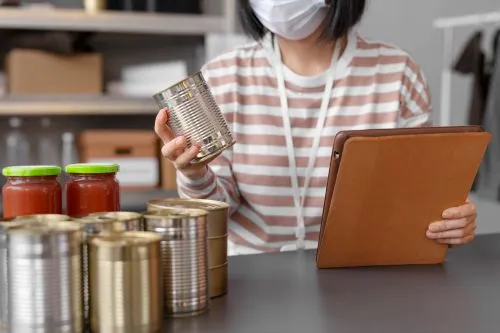
Analysts expect the global poultry market to start recovering after a weak second half of 2023, but geopolitical tensions will remain a concern. Meanwhile, top suppliers are turning to data platforms and AI systems to enhance productivity and transparency.
Global conditions rebounding
According to a new Rabobank report, conditions in the global poultry market are gradually improving, with demand expected to pick up due to better accessibility driven by rising incomes, lower costs, and inflation rates.
Several markets that faced oversupply and price declines saw improved local market conditions in the first quarter of 2024. In most cases, these improvements were driven by production cuts to rebalance supply, which put pressure on demand.
"We expect global markets to continue to improve slightly," says Nan-Dirk Mulder, Senior Analyst for Animal Protein at Rabobank. "Price will continue to stimulate market demand, but less so than in 2023, due to lower consumer price inflation and higher incomes."
This shift will support some recovery in demand for value-added poultry, such as processed chicken and improved demand in the food sector, the bank suggests.
However, price awareness among consumers will remain a key factor. The main challenge will be maintaining market balance with disciplined supply growth.
"From a global perspective, we expect growth of 1.5–2% for 2024, primarily driven by emerging markets in Asia, the Middle East, Africa, and Latin America. Growth in Europe, the US, and Japan will be slow," Mulder says.
Data-driven insights
Poultry growers are increasingly adopting new digital technologies to improve their operations. For example, DSM-Firmenich is piloting a data platform with agricultural cooperative Agrifirm to promote more responsible and transparent production.
The Poultry Next platform enables improved supply chain transparency, providing an accurate picture of the entire product journey—from feed to farm to retail shelf.
The partners aim to support carbon emission reduction goals and overcome issues related to supply chain size and complexity through the platform. Increased accessibility is expected to drive demand for poultry this year.
"There are real opportunities to improve efficiency, sustainability, and animal health, and these are often interdependent. Connecting Sustell to Agrifirm's Poultry Next, an industry leader, is key to unlocking the value of sustainability for Agrifirm farmers and chain partners," says David Nickell, VP Sustainability and Business Solutions at DSM-Firmenich, Animal Nutrition and Health.
Meanwhile, Cargill is harnessing the power of AI to improve poultry flock health. In a recent interview, Florian Schattenmann, Cargill's Technical Director and Vice President of Research and Development and Innovation, told us, "We have a project called Galleon that allows us to analyze the microbiome DNA of a flock of chickens—so a farmer can get samples of chicken feces from their farm, send it to us, and we analyze it and tell them how healthy that flock is. The farmer can then adjust the feed to improve the health status of the chicken flock."
"Over time, as we get better data around different chicken farms, we can see that there can be a lot of fluctuation in farm A and much more stability in farm B, so we can adjust and predict what the farmer will need. So, the model learns by getting more data from more samples. A healthy flock will be more productive and have less mortality and be better for the GES footprint."
Trade flow issues
According to Rabobank, potential distribution challenges are the biggest concern for the poultry market due to geopolitical tensions in the Black Sea region, Houthi attacks in the Red Sea, and drought affecting water levels in the Panama Canal.
With increasing redirection of flows on southern routes, these challenges could impact global poultry trade and related inputs, with rising costs, delayed supply, and limited container availability.
Trade flows to and from Europe, Asia, the Middle East, and Africa are particularly vulnerable to changes, which could increase regional trade concentration or lead to higher costs and potential supply delays, especially for goods primarily produced in one region, such as animal feed additives, equipment, animal health products, or specific poultry products like processed poultry or whole birds for the Middle East.
"Regional trade flows in Asia, Europe, and the Middle East are expected to benefit from the situation, while traders shipping to those destinations will be negatively affected," Mulder says.
Persistent operational challenges
The Dutch bank also highlights that feed costs have decreased on average by 15-25% compared to 2023 levels, but regions in the southern hemisphere and countries like India and Indonesia are increasingly exposed to dry weather at critical times for their summer crops, raising concerns about quality feed availability.
In contrast, feed deliveries from Brazil and countries and regions in the northern hemisphere such as the US, EU, and Russia are "good" and facing declining prices. From a supply and demand perspective, global commodity prices seem to have bottomed out, primarily due to concerns about geopolitics, trade issues, and weather events like El Niño. It appears that fast-food giants still do not meet chicken welfare standards.
Avian flu remains a concern as well. Rabobank expects risks to shift in the coming months to the southern hemisphere, where several countries are resorting to vaccinations to protect the industry.
"Any outbreak in the southern states of Brazil—especially in a commercial flock—could have a substantial impact on global trade," Mulder says.
Special attention will be paid to avian flu risks in key exporting countries like Brazil and Thailand, where outbreaks could affect global market conditions and trade flows.
Chicken welfare concerns
The modest market growth forecast for poultry comes against the backdrop of growing animal welfare considerations among consumers. Late last year, a World Animal Protection report found that European fast-food leaders largely oppose chicken welfare standards.
McDonald’s, Burger King, and Starbucks were among the chains with "very poor" performance in managing and reporting chicken welfare in multiple countries. These restaurants did not respond when asked if they agree with their assessment, what actions they are taking to manage chicken welfare, and to what extent they are prepared for the European Chicken Commitment (ECC) in 2026.
ECC is a set of minimum requirements designed to effectively improve chicken welfare cost-effectively. Although there are no penalties associated with this commitment, companies that fail to meet the requirements risk brand reputation and financial support, Michelle Baxter Wickham, Private Sector Engagement Manager at World Animal Protection, told us. (Photo: Dreamstime)





